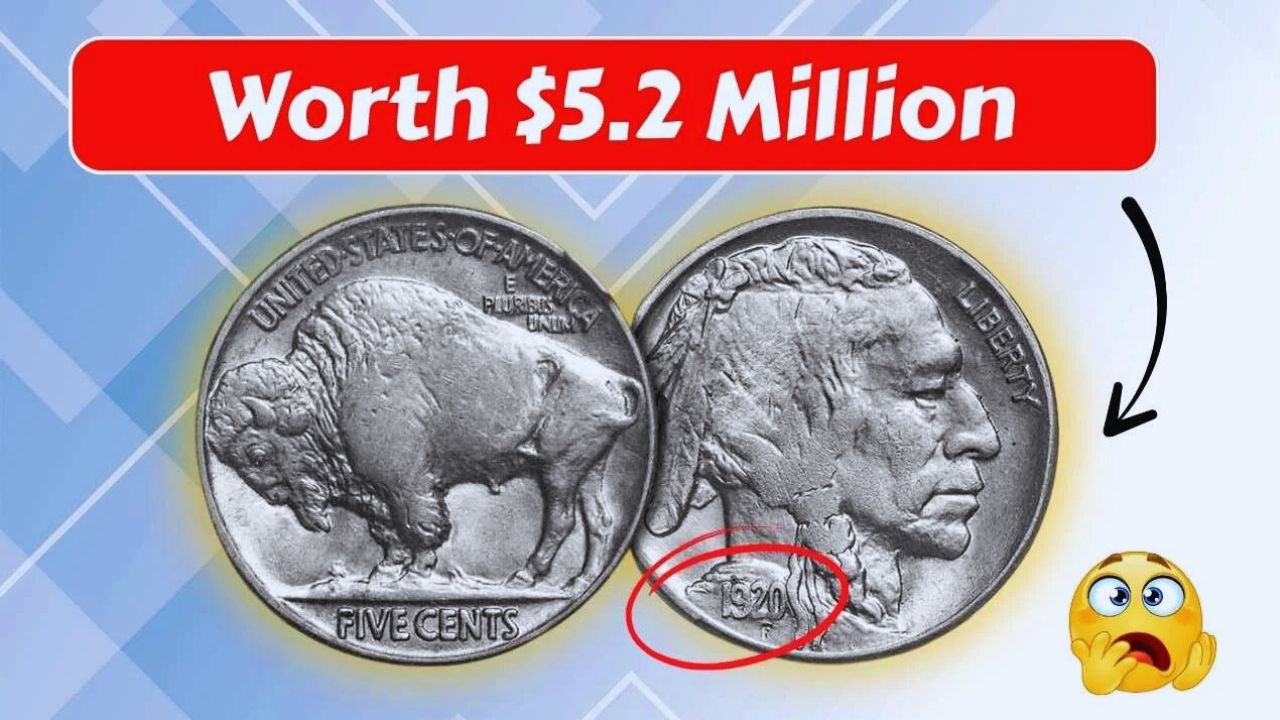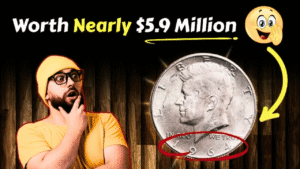Imagine finding a coin worth millions in an old jacket pocket! The 1913 Liberty Head Nickel, one of the rarest coins in the world, fetched $5.2 million at auction, sparking a treasure hunt among collectors and everyday folks alike. With only five known examples, this mysterious coin’s story blends history, intrigue, and life-changing value. Could one be hiding in your home? Let’s uncover the secrets of this numismatic gem and how to spot it!
The Legend of the 1913 Liberty Head Nickel
A Mysterious Origin
In 1913, the U.S. Mint switched from the Liberty Head to the Buffalo (Indian Head) Nickel design. Yet, five Liberty Head Nickels dated 1913 surfaced, likely struck without official approval. Experts suspect a mint employee, possibly Samuel W. Brown, created these coins secretly, adding to their allure.
Why So Rare?
Only five 1913 Liberty Head Nickels are known to exist. Two are in museums (Smithsonian and ANA Money Museum), leaving just three in private hands. This scarcity drives their value sky-high, with one selling for $5 million in 2007.
A Piece of American History
These coins, designed by Charles E. Barber, feature Lady Liberty on the obverse and a Roman numeral “V” for five cents on the reverse. Their unauthorized production and dramatic auction history make them a numismatic legend, even appearing in pop culture like “Hawaii Five-O.”
Why Is the 1913 Liberty Head Nickel So Valuable?
Rarity and Demand
With only five examples, the 1913 Liberty Head Nickel is a collector’s holy grail. High demand from wealthy numismatists pushes prices to millions, with the Eliasberg specimen fetching $4.56 million in 2018.
Historical Intrigue
The coins’ mysterious creation fuels fascination. Were they test strikes or a mint worker’s secret project? This unsolved puzzle adds to their mystique and value.
Auction Records
| Specimen | Sale Year | Sale Price | Buyer/Owner Notes |
|---|---|---|---|
| Eliasberg | 2018 | $4.56 million | Finest known, graded Proof-66 |
| Walton | 2022 | $4.2 million | Owned by Firman family, GreatCollections |
| Olsen | 2010 | $3.7 million | Private sale |
| McDermott | N/A | Museum-owned | Only coin with circulation wear |
| Norweb | 2001 | $1.84 million | Sold at auction |
The Eliasberg specimen, graded Proof-66, is the finest known, while the McDermott coin, with circulation marks, resides at the ANA Money Museum.
How to Spot a 1913 Liberty Head Nickel
Key Identifying Features
- Design: Look for the Liberty Head (Lady Liberty with a coronet) on the obverse, not the Native American of the Buffalo Nickel.
- Date: Must be 1913, with no mint mark (indicating Philadelphia Mint).
- Reverse: Features a Roman numeral “V” without “CENTS” below it, unlike later Liberty Head Nickels.
Condition Matters
Coins in pristine condition, like the Proof-66 Eliasberg specimen, command the highest prices. Check for sharp details on Liberty’s hair and coronet. Even worn examples, like the McDermott specimen, are valuable due to their rarity.
Beware of Fakes
Counterfeits are common. Authentic coins have been graded by PCGS or NGC. If you suspect a find, consult a professional grading service to verify authenticity.
Tips for Finding Your Own Treasure
Where to Look
- Old Belongings: Check attics, basements, or inherited items like coin jars or old clothes.
- Flea Markets and Antique Shops: Rare coins sometimes surface in secondhand stores.
- Family Heirlooms: Ask relatives about old coin collections or loose change from decades past.
How to Handle Suspected Finds
- Don’t Clean: Cleaning removes the natural patina, slashing value.
- Handle Carefully: Hold coins by the edges to avoid scratches.
- Get It Graded: Contact PCGS or NGC for professional authentication.
Auction and Sale Tips
If you find a rare coin, work with reputable auction houses like Heritage Auctions or Stack’s Bowers. Recent sales show these coins fetch millions, so professional appraisal is key.
The Cultural Impact of the 1913 Liberty Head Nickel
A Pop Culture Icon
This coin’s fame extends beyond numismatics. It appeared in a 1973 “Hawaii Five-O” episode and has been featured in books and articles, cementing its status as a cultural treasure.
Inspiring Treasure Hunts
The Walton specimen, found after decades in a closet, sparked nationwide searches. In 2003, a publicity stunt by Bowers and Merena offered $1 million for the “missing” fifth coin, reigniting public interest.
A Symbol of Rarity
The 1913 Liberty Head Nickel symbolizes the thrill of discovery. Stories like the Firman family’s $4.2 million sale in 2022 inspire collectors and dreamers alike.
FAQs About the 1913 Liberty Head Nickel
1. Why is the 1913 Liberty Head Nickel so valuable?
Its value comes from extreme rarity (only five exist), historical mystery, and high collector demand. Auction sales have reached up to $5 million.
2. How can I tell if I have a 1913 Liberty Head Nickel?
Look for a 1913 date, Liberty Head design, no mint mark, and a “V” on the reverse without “CENTS.” Verify with PCGS or NGC grading.
3. Were these coins legally minted?
No, they were likely struck without U.S. Mint authorization, possibly by a mint employee like Samuel W. Brown.
4. Where are the five 1913 Liberty Head Nickels today?
Two are in museums (Smithsonian and ANA Money Museum), and three are privately owned (Eliasberg, Walton, and Olsen specimens).
5. Could there be more 1913 Liberty Head Nickels out there?
While only five are confirmed, some speculate a sixth exists due to early records of a six-slot case, but no additional coins have surfaced.
Conclusion: Your Chance at a Million-Dollar Find
The 1913 Liberty Head Nickel is more than a coin—it’s a piece of history wrapped in mystery and worth millions. With only five known examples, finding one could change your life, as it did for the Firman family and others. Whether tucked in a coat pocket or hidden in a family heirloom, this rare nickel proves treasures can hide in plain sight. Check your change, dig through old boxes, and keep your eyes peeled—you might just uncover the next million-dollar coin! Visit a local coin dealer or check pcgs.com for expert grading to start your treasure hunt today.




